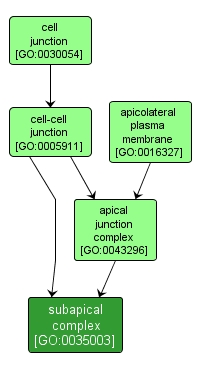GO TERM SUMMARY
|
| Name: |
subapical complex |
| Acc: |
GO:0035003 |
| Aspect: |
Cellular Component |
| Desc: |
The most apical region of the lateral plasma membrane of an invertebrate epithelial cell. The subapical complex lies above the zonula adherens and the septate junction, and is comparable to the position of the tight junction of vertebrate cells. |
| Synonyms:
|
|

|
INTERACTIVE GO GRAPH
|














